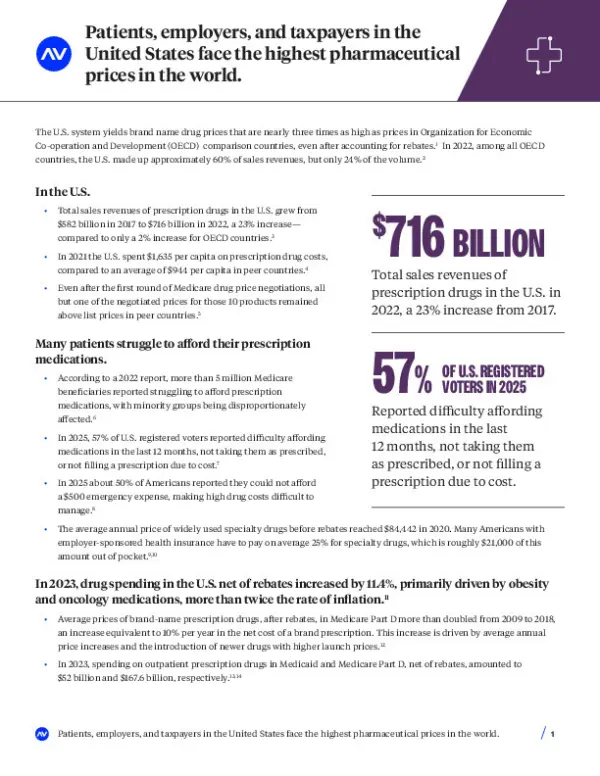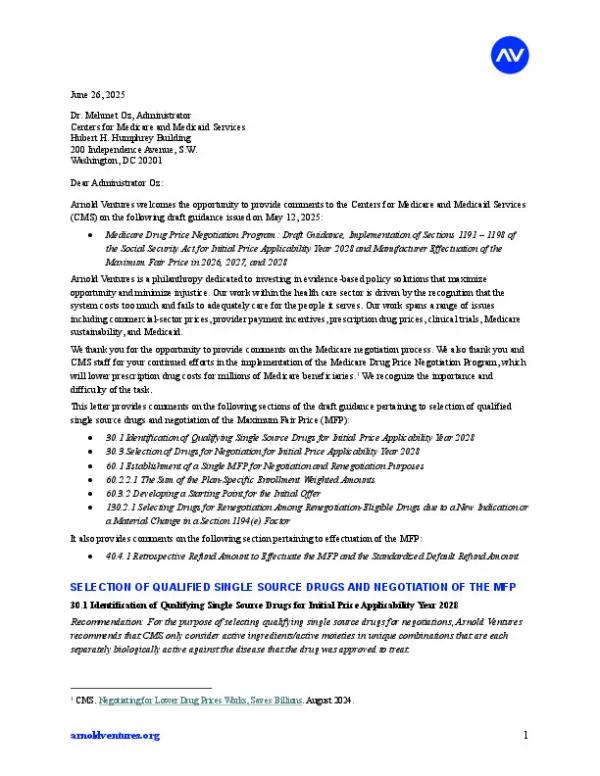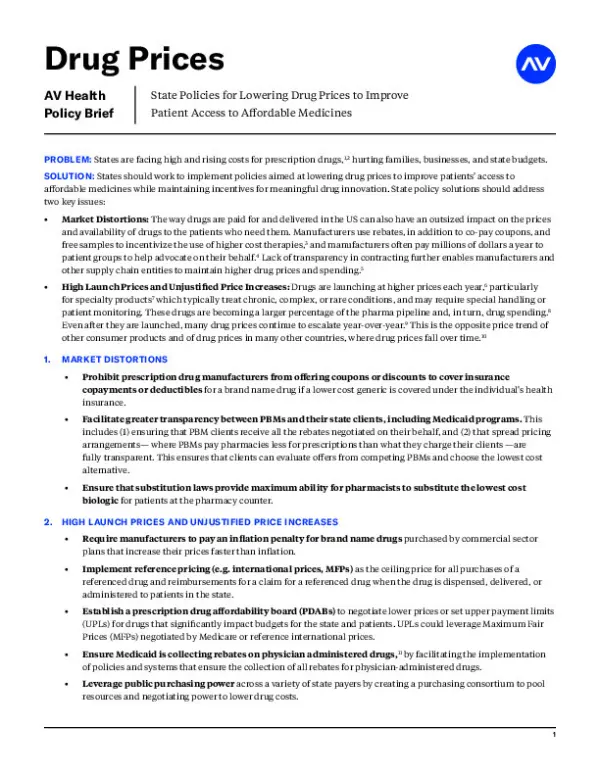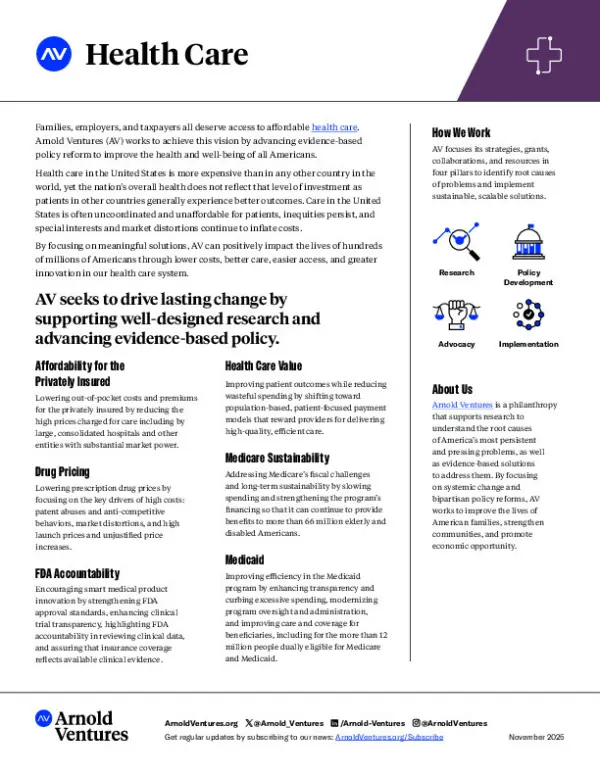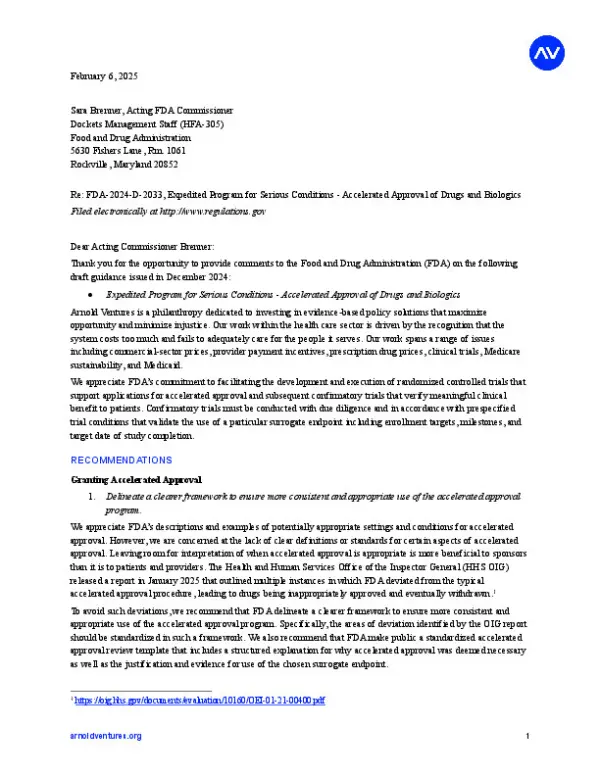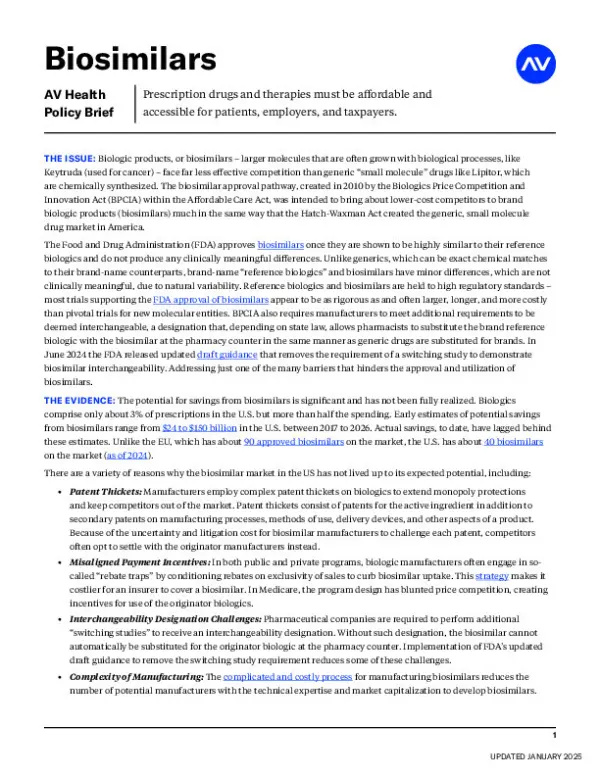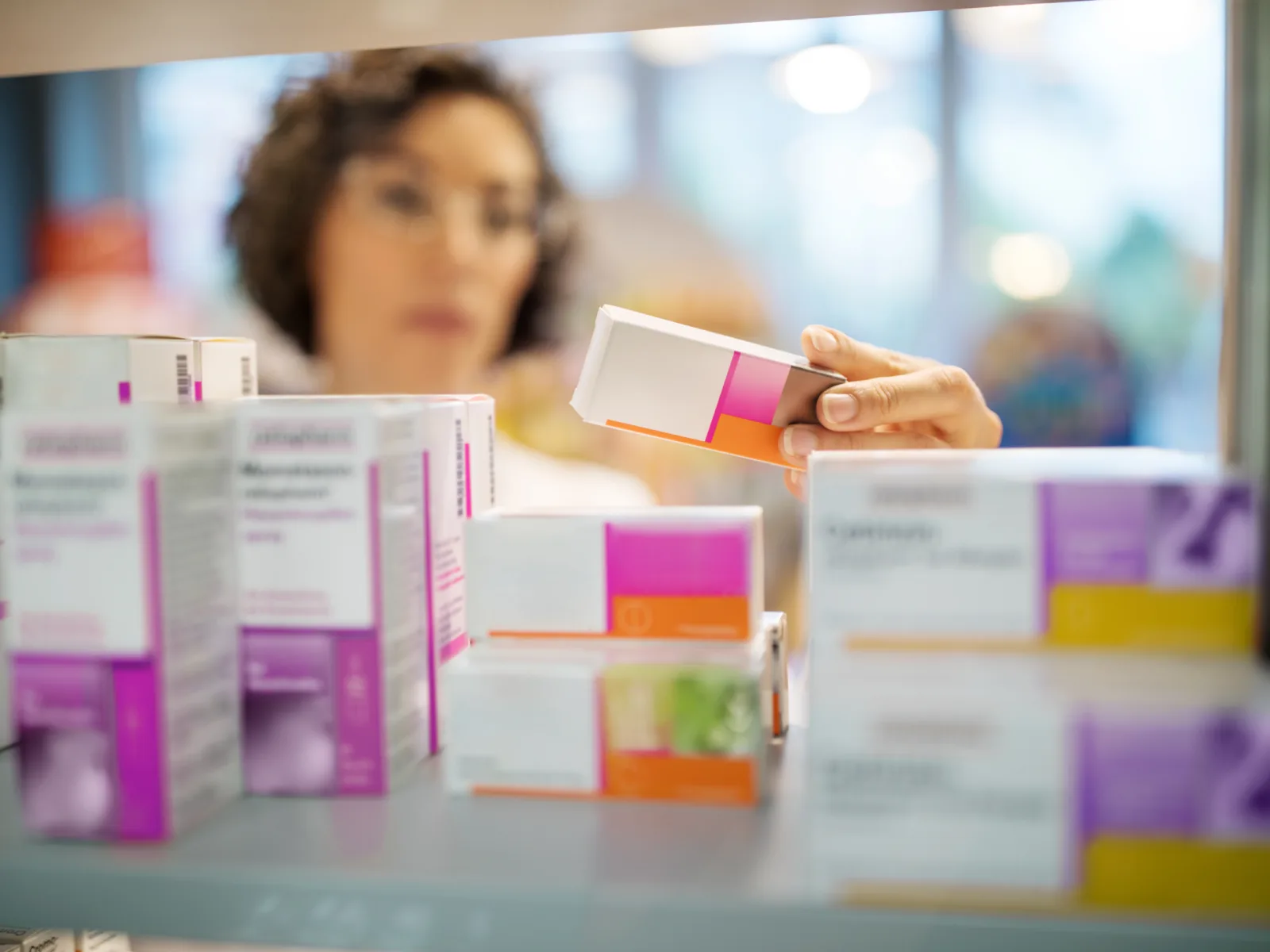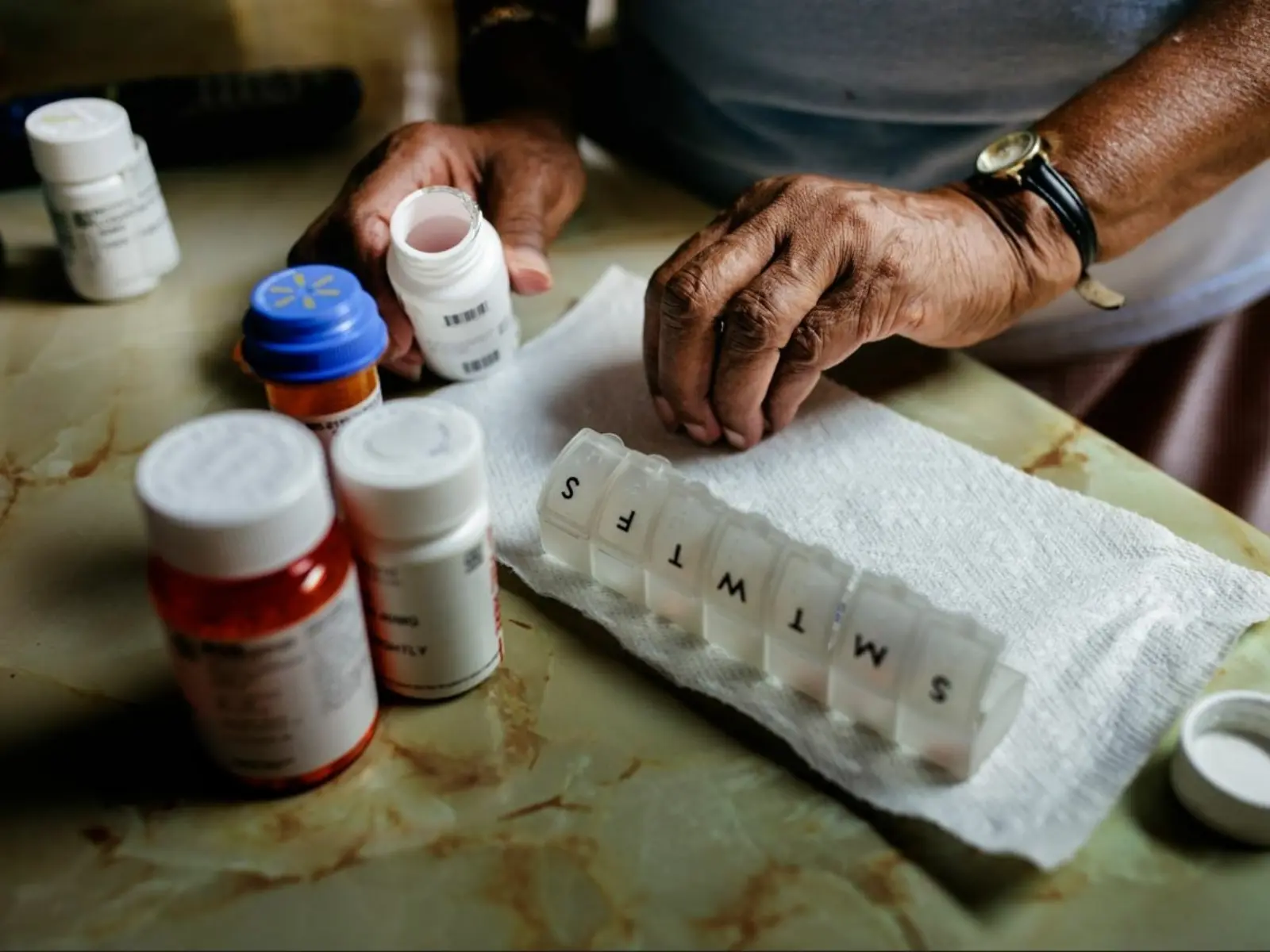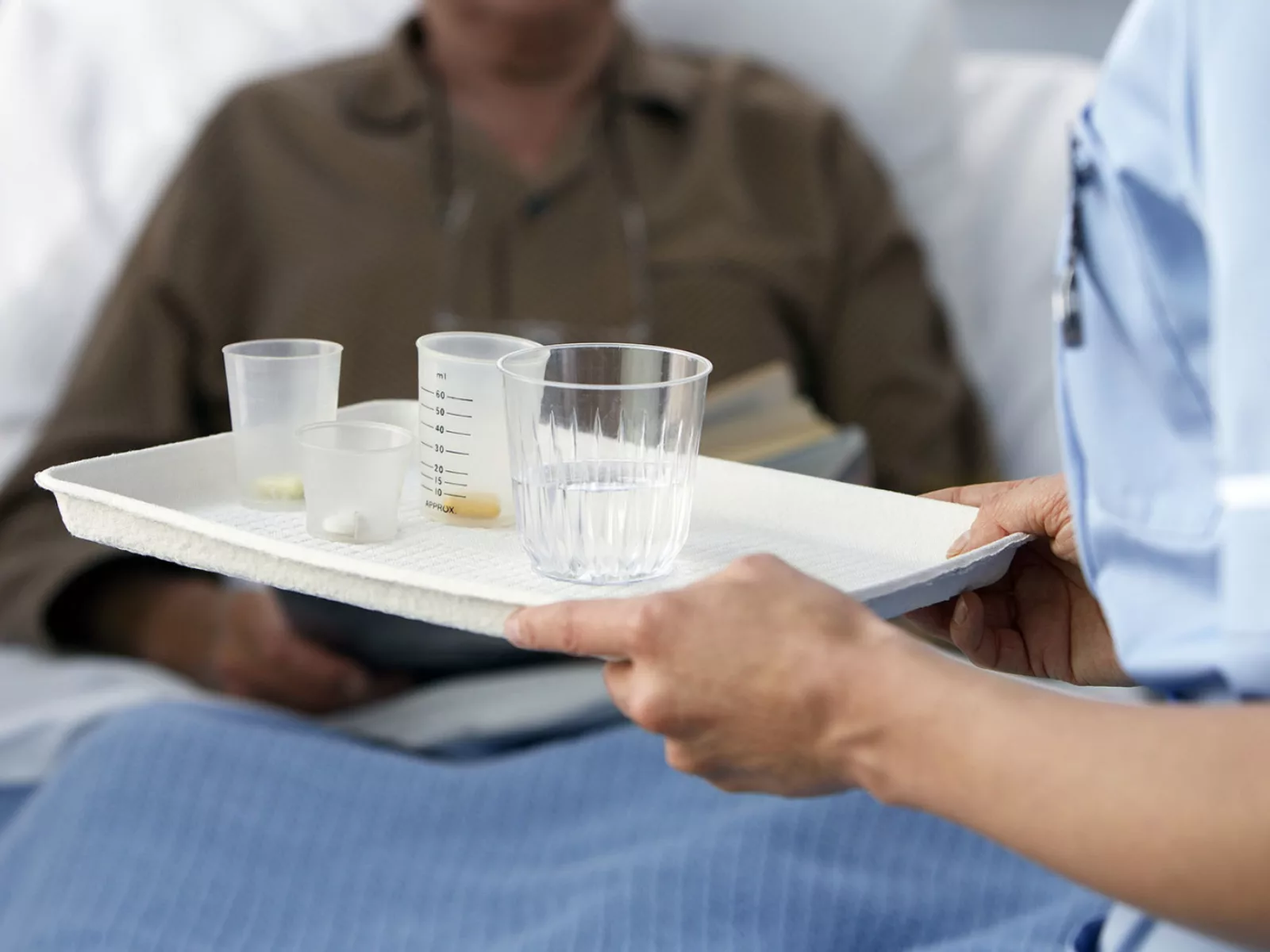Drug Prices

Prescription drugs and therapies must be affordable and accessible for patients, employers, and taxpayers.
The U.S. drug-pricing system is filled with market failures. High launch prices and unjustified price increases, market distortions, and anti-competitive behaviors by drug manufacturers lead to rising drug costs, a lack of price competition, and government-granted monopolies that allow drug manufacturers to set prices at will. The result is drug prices that are rising and expected to grow faster than most other major health care goods and services by the end of the next decade, with total national drug spending expected to increase by 62 percent over the same period.
We aim to lower drug prices to reduce costs for patients, employers, and taxpayers, while also maintaining appropriate incentives for meaningful drug innovation. We focus on evidence-based solutions that address the key drivers of high drug pricing and spending: patent abuses and anti-competitive behaviors that thwart competition; market distortions supported by perverse incentives and lack of transparency; and high launch prices and unjustified price increases affecting public and private payers. We believe that the United States can remain at the forefront of pharmaceutical research and innovation while also ensuring that life-saving treatments are affordable and accessible to all.
Image: Getty Images photo

